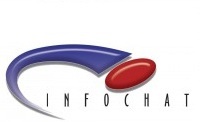
The best method for the transition is to abandon unlimited tariffs from the launch of LTE. Operators should not feel compelled to simply roll over their existing pricing models. This has been the approach taken by SK Telecom and LG U+ in South Korea, Singapore Telecom in Singapore, and AT&T Wireless in the US.
Other operators that initially offered unlimited LTE tariffs have now also begun to change their pricing models. In Asia-Pacific, Hong Kong mobile operator CSL recently adopted a new LTE tariff strategy centered on volume-based pricing, which has proven popular with customers. US mobile operator Verizon Wireless also phased out unlimited data tariffs for LTE in July 2011, and this has not adversely affected its LTE uptake.
When transitioning to volume-based pricing models, operators should avoid complicated pricing structures. Instead, they should focus on educating their customers on their data requirements and usage limits so as to limit the possibility of bill shock. Operators should also introduce measures such as maximum excess usage charges for the same reason.
In addition, operators must look to exploit the upsell opportunities that will be presented by the shift to alternative pricing models, particularly moving customers to higher data allowances as data usage grows.







